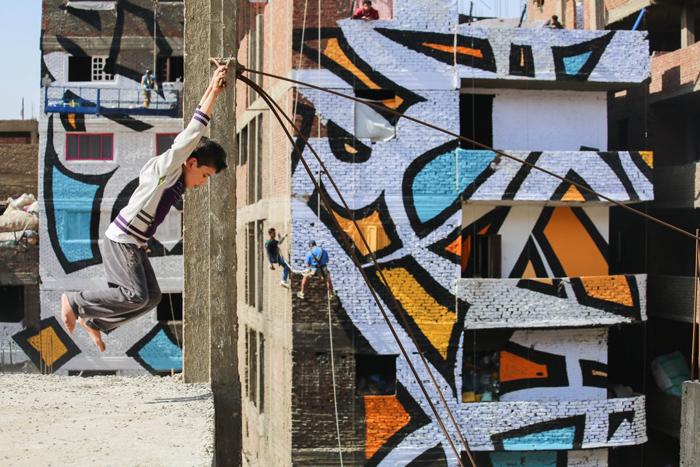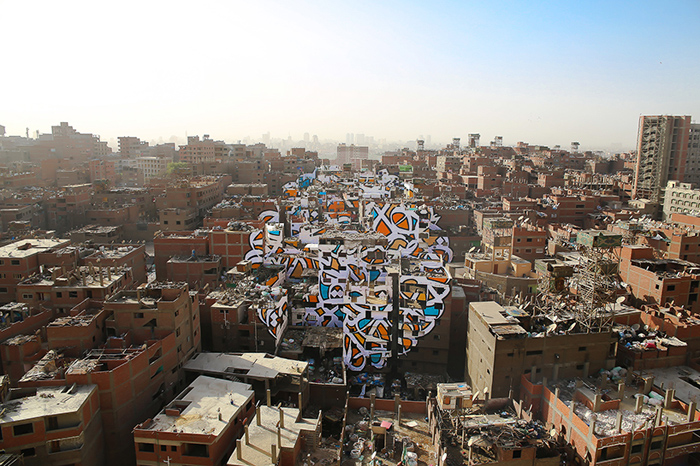Calligraffiti
The more you go to the East, the more you reach the West.
The Tunisian-French street artist eL Seed has created his new piece of work “Perception” in the neighborhood of Manshiyat Nasr in Cairo, where the Coptic community of the so-called Zabaleen – garbage people – live, they clean the city of Cairo. The artwork is extended over 50 buildings and was created in total secrecy from the Egyptian government.
The artist was born and raised by his Tunisian parents in France and first learned to read and write in Arabic when he was eighteen years old. He calls his mix of graffiti and Arabic calligraphy “Calligraffiti”, which is not restricted by the rules of Arabic calligraphy but rather more his interpretation and recreation of it. With returning to his routes and his quest of identity he is aiming to invite people to his language, culture and art to promote tolerance between the people and break down stereotypes of the Arabic world, and in light of Arabic spring, to comment the changing world order.
All around the world he could realize his works, always with messages that speak to the local community within the beauty of calligraphy but with the language of the youth.
Calligraffiti in York City: “The more you go to the East, the more you reach the West.”
“Perception” is not his first famous work. In 2012 he achieved a certain claim of fame for the painting of the minaret of the Jara Mosque in the southern Tunisian city of Gabes. In the birthplace of the Arab spring, eL Seed is in line with many other street artists facing the restrictions of the revolution through the demanded freedom of art. In an interview with the Crimson Magazine he stated: “When you paint on the street, it’s like you’re taking back the public space. Why do they call it public space if you can’t paint in it?”
[widgetkit id=20679]
‘Anyone who wants to see the sunlight clearly needs to wipe his eye first.’
‘إنأرادأحدأنيبصرنورالشمس،فإنعليهأنيمسحعينيه’
This sentence is quoting the Coptic bishop Athanasius. Before realizing his completely self-funded work he had to confess the priest of the Coptic neighborhood. Within three weeks and a big team he finished the piece, which can only be seen in its whole from a certain view of point of the Moqattam Mountain nearby. The wall is for him just the pretext to open conversation in the public thus challening variety and change perception to lead to positive encounters between different people, cultues and nationalities. Because what you think always depends on the view of perspective.



